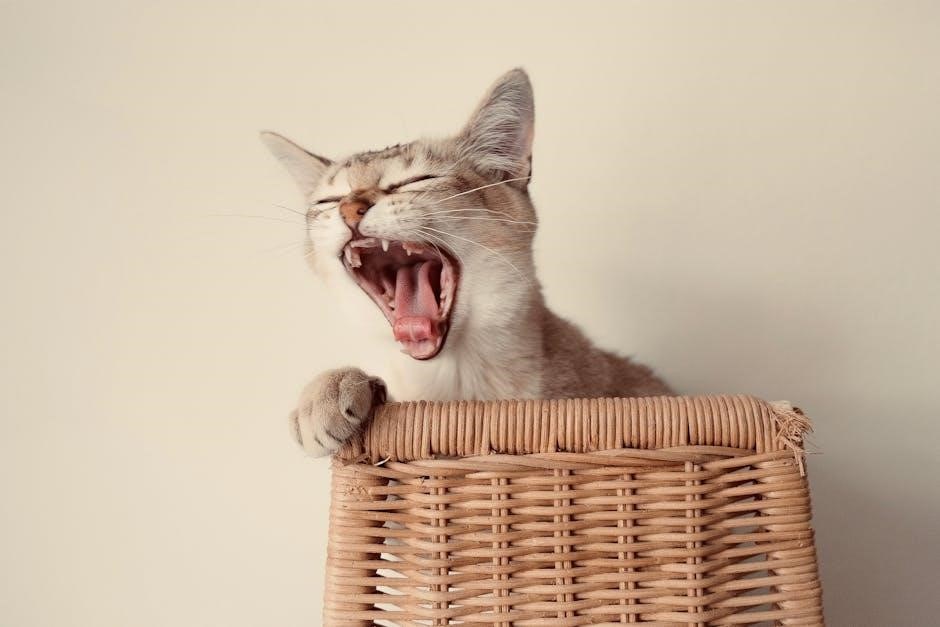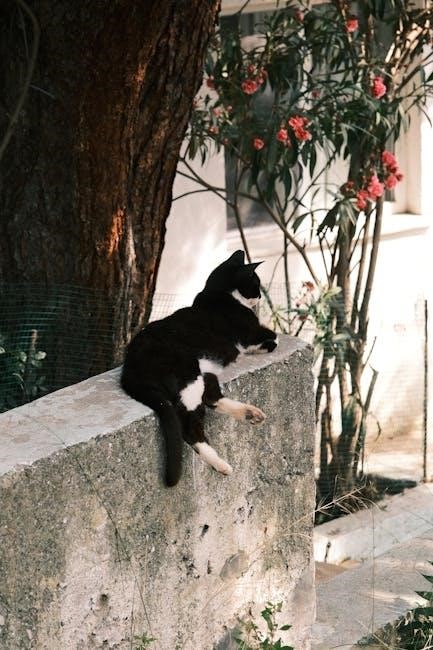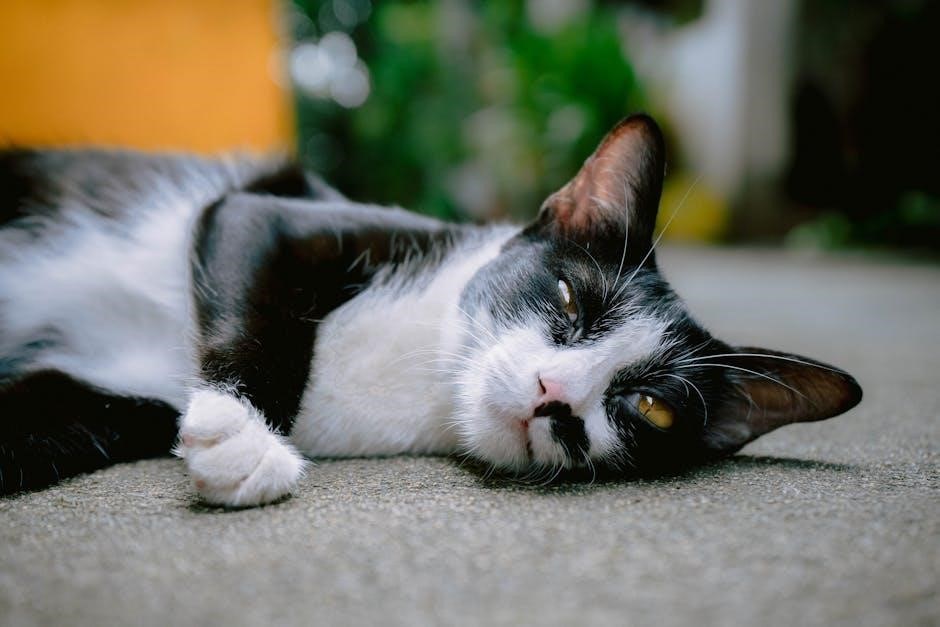
the sleepy hollow pdf
Discover the eerie tale of The Legend of Sleepy Hollow, a classic story by Washington Irving, featuring Ichabod Crane and the mysterious Headless Horseman in a haunted valley.
1.1 Origins of “The Legend of Sleepy Hollow”
The Legend of Sleepy Hollow, written by Washington Irving, originated from his fascination with Dutch folklore and the haunting landscapes of the Hudson River Valley. The story is set in Tarry Town, a quiet hamlet near the Hudson River, known for its mysterious and superstitious atmosphere. Irving drew inspiration from local legends and the eerie beauty of the region, blending horror and humor to create a timeless tale. The story first appeared in Irving’s collection, The Sketch Book of Geoffrey Crayon, in 1820, and has since become a cornerstone of American literature. The tale’s origins are deeply rooted in the cultural and historical context of the early 19th century, reflecting the beliefs and fears of the people living in the Hudson Valley. Today, the story remains popular, with numerous editions and adaptations available, including PDF versions that preserve its original charm and suspense.
1.2 The Setting of Sleepy Hollow
Sleepy Hollow, a small, rural village, is nestled along the eastern shore of the Hudson River in New York. The story unfolds in a haunted valley, known for its eerie and mysterious atmosphere. The setting is described as peaceful yet strange, with a pervasive sense of enchantment. The valley is home to superstitions, ghostly legends, and unexplained phenomena, creating a backdrop of fear and fascination. Tarry Town, a nearby port, is also central to the tale, adding to the rural charm and isolation. The supernatural elements of the setting, such as the haunted glen and the Headless Horseman, emphasize the blending of folklore and horror. The PDF versions of the story vividly capture this atmospheric setting, immersing readers in the haunting world of Sleepy Hollow.
1.3 Plot Overview
The story revolves around Ichabod Crane, a lanky and superstitious schoolteacher who arrives in Sleepy Hollow, a remote New York village. The area is renowned for its eerie atmosphere and the legend of the Headless Horseman, a ghostly figure said to be the spirit of a Hessian soldier. Ichabod becomes infatuated with Katrina Van Tassel, the beautiful daughter of Baltus Van Tassel, a wealthy farmer. However, his affections are rivaled by Brom Bones, a robust and charming local suitor. As Ichabod navigates this romantic conflict, he encounters the Headless Horseman one fateful night, leading to a terrifying chase. The next morning, Ichabod vanishes, leaving behind only his hat and a shattered pumpkin. The mystery of his fate—whether he was spirited away or simply fled—remains unresolved, leaving readers with a haunting sense of intrigue.
Author Background
Washington Irving, a renowned 19th-century American writer, is best known for The Legend of Sleepy Hollow, a timeless tale available as a PDF globally. His works remain widely read and studied today.
2.1 Washington Irving: A Brief Biography

Washington Irving, born on April 3, 1783, in New York City, was a renowned American writer, historian, and diplomat. He is often regarded as the “Father of American Literature” for his significant contributions to the nation’s literary identity. Irving’s early career included stints in law and journalism before he turned to writing. His breakthrough came with the publication of The Sketch Book of Geoffrey Crayon, Gent. in 1819, which included the iconic tale The Legend of Sleepy Hollow. Irving’s works often blended folklore, humor, and supernatural elements, captivating readers worldwide. He later served as a diplomat in Spain and England, further enriching his literary perspective. Irving passed away on November 28, 1859, leaving behind a legacy as one of America’s most influential writers, whose stories continue to resonate with audiences today.
2.2 Irving’s Inspiration for the Story
Washington Irving drew inspiration for The Legend of Sleepy Hollow from a blend of Dutch folklore, local history, and the eerie atmosphere of the Hudson River Valley. The story’s setting, Sleepy Hollow, was influenced by Irving’s familiarity with the region’s haunting landscapes and the superstitions of its early Dutch settlers. Irving’s interest in European folklore, particularly Germanic tales of headless spirits, likely shaped the iconic character of the Headless Horseman. Additionally, his fascination with the supernatural and the romanticized view of colonial America played a significant role in crafting the story’s haunting and mysterious tone. Irving’s personal experiences and travels also contributed to his ability to weave together history, folklore, and horror, creating a tale that has endured as a classic of American literature.

Main Characters
The story features Ichabod Crane, a timid schoolteacher; the Headless Horseman, a terrifying supernatural figure; Katrina Van Tassel, the charming daughter of a farmer; and Brom Bones, Ichabod’s rival.
3.1 Ichabod Crane: The Schoolteacher
Ichabod Crane, the protagonist of The Legend of Sleepy Hollow, is a lanky and superstitious schoolteacher from Connecticut. He arrives in Sleepy Hollow to educate the local children, bringing with him a fascination for mystery and a belief in the supernatural. Crane is ambitious, hoping to marry Katrina Van Tassel, the daughter of a wealthy farmer, to secure his future. His awkward demeanor and Yankee traits set him apart in the Dutch community. Despite his scholarly background, Ichabod is deeply influenced by ghost stories and folklore, which heightens his fear of the Headless Horseman. His unrequited love and rivalry with Brom Bones drive the story’s tension, ultimately leading to his mysterious disappearance. Crane’s character embodies the clash between reason and superstition, making him a memorable figure in American literature.
3.2 The Headless Horseman: Symbol of Horror
The Headless Horseman is the embodiment of horror in The Legend of Sleepy Hollow, striking fear into the hearts of all who cross his path. Believed to be the ghost of a Hessian soldier decapitated by a stray cannonball during the American Revolution, he rides his black steed in search of his missing head. His unsettling appearance, complete with a jack-o’-lantern as a substitute for his head, and his ominous presence, create an atmosphere of dread throughout the story. The Horseman’s relentless pursuit of Ichabod Crane symbolizes the inescapable nature of fear and fate. His character serves as a timeless symbol of horror, blending folklore and superstition to leave a lasting impact on American literature and culture. The Headless Horseman remains an iconic figure, evoking terror and fascination in readers and audiences alike.
3.3 Katrina Van Tassel: The Enigmatic Beauty
Katrina Van Tassel, the daughter of Baltus Van Tassel, is a central figure in The Legend of Sleepy Hollow. Her beauty and charm captivate the hearts of many, including Ichabod Crane and Brom Bones; As the object of affection, Katrina embodies grace and allure, making her a pivotal character in the story’s romantic subplot. Her enigmatic nature adds depth to the narrative, as her feelings and intentions remain subtly ambiguous. Katrina’s role extends beyond romance; she represents the elusiveness of desire and the societal expectations placed on women in 19th-century America. Her interactions with Ichabod and Brom highlight themes of unrequited love and rivalry, while her intelligence and wit showcase her as a strong, independent figure. Katrina’s character is a blend of mystery and beauty, making her a timeless symbol in American literature.

Themes
The tale masterfully blends horror and romance, exploring the supernatural through the Headless Horseman and the doomed pursuit of Katrina by Ichabod Crane.
4.1 Horror and the Supernatural
The central figure of horror in The Legend of Sleepy Hollow is the Headless Horseman, a terrifying apparition embodying death and the supernatural. His presence haunts the valley, striking fear into the hearts of all who dwell there. The story masterfully blends folklore and ghostly elements, creating an eerie atmosphere that captivates readers. The Horseman, a Hessian soldier whose head was lost in battle, rides in search of his missing skull, symbolizing the relentless pursuit of the unknown. The villagers’ deep belief in spirits and ghosts amplifies the sense of dread, as they view the Horseman as an omen of doom. Irving’s vivid descriptions of the haunted valley and its dark legends heighten the supernatural tension, making the tale a timeless classic in horror literature. The interplay of fear and folklore ensures the story’s enduring appeal, leaving readers spellbound by its chilling narrative;

4.2 Romance and Unrequited Love
In The Legend of Sleepy Hollow, romance and unrequited love play a central role in driving the plot and shaping the characters’ motivations. Katrina Van Tassel, the beautiful daughter of Baltus Van Tassel, becomes the object of affection for both Ichabod Crane and Brom Bones. Ichabod, a shy and intellectual schoolteacher, harbors deep feelings for Katrina, seeing her as a potential escape from his humble life. His unrequited love fuels his determination to win her hand, despite the rivalry with Brom, a charming and confident local suitor. Katrina’s enigmatic nature adds to the tension, as her feelings for Ichabod remain ambiguous, leaving him in a state of emotional turmoil. This romantic subplot intertwines with the supernatural elements of the story, creating a rich and layered narrative that explores the complexities of love, rejection, and longing. The interplay between romance and horror underscores the enduring appeal of Irving’s classic tale.

Symbolism
The Headless Horseman symbolizes fear and fate, embodying the dark, supernatural forces that haunt Sleepy Hollow, making him a timeless figure in American folklore and horror.
5.1 The Headless Horseman as a Symbol
The Headless Horseman is a central symbol in The Legend of Sleepy Hollow, embodying fear, the supernatural, and the darker aspects of human imagination. His haunting presence in the valley represents the unresolved past and the terrifying unknown. The Horseman, often interpreted as a Hessian soldier, serves as a reminder of death and fate, striking fear into the hearts of Sleepy Hollow’s inhabitants. His headless state symbolizes the loss of identity and the inevitability of destiny, while his relentless pursuit of Ichabod Crane highlights the inescapable nature of fear. The character also reflects the cultural and historical backdrop of the story, blending folklore with horror. As a symbol, the Headless Horseman transcends the story, becoming an iconic figure in American literature and pop culture, representing the enduring power of superstition and terror.
5.2 Katrina Van Tassel as a Symbol of Elusiveness
Katrina Van Tassel, the enchanting daughter of Baltus Van Tassel, embodies elusiveness through her enigmatic nature. Her beauty and charm captivate Ichabod Crane, yet she remains emotionally distant, symbolizing the unattainable. Katrina’s teasing nature and flirtatious behavior suggest a deliberate ambiguity, leaving Ichabod and readers questioning her true intentions. This elusiveness mirrors the mysterious atmosphere of Sleepy Hollow, where nothing is as it seems. Katrina’s character serves as a metaphor for the elusive nature of love and desire, often just out of reach. Her interactions with Ichabod highlight the tension between reality and illusion, reinforcing the story’s themes of ambiguity and the supernatural. Through Katrina, Irving explores the human experience of chasing something unattainable, adding depth to the narrative’s haunting allure.

Availability as a PDF
The classic tale is available as a free PDF download from Project Gutenberg, offering various formats for easy reading on digital devices.
Download the story in its original 1863 edition or modern adaptations, ensuring access to this timeless horror and romance narrative in multiple formats online.
6.1 Sources for Downloading the PDF
Multiple sources offer free downloads of The Legend of Sleepy Hollow in PDF format. Project Gutenberg provides a classic edition of the story, available for free without registration. Additionally, websites like ManyBooks and Google Books host downloadable versions, ensuring easy access to this timeless tale. Some editions include illustrations from historic publications, enhancing the reading experience. Readers can also find adapted versions with annotations for educational purposes. These sources make it convenient to enjoy Washington Irving’s masterpiece in digital format.
- Project Gutenberg: Offers a free, downloadable PDF of the classic tale.
- ManyBooks: Provides a formatted PDF version for easy reading.
- Google Books: Hosts scanned editions of the story for download.
6.2 Formats and Editions Available

The Legend of Sleepy Hollow is available in various formats, ensuring accessibility for readers. The classic tale can be downloaded as a PDF, EPUB, or Kindle edition, catering to different reading preferences. Project Gutenberg offers a free PDF version of the story, sourced from the 1863 edition of The Sketch Book of Geoffrey Crayon, complete with original illustrations. Additionally, an 1896 edition is available, featuring annotations and historical context. Readers can also explore adapted versions, such as the one by Vivian E. Jackson, which includes modern annotations and visuals. These diverse formats and editions allow readers to experience the timeless horror and romance of Sleepy Hollow in ways that suit their reading style, whether on e-readers, mobile devices, or printed copies.

Cultural Impact

7.1 Adaptations in Film and Literature
The tale has inspired numerous film adaptations, cementing its place in horror and folklore, with the Headless Horseman becoming an iconic figure in American culture.
7.2 Influence on American Folklore
Irving’s story has deeply influenced American folklore, blending romance and horror, making Sleepy Hollow a symbol of supernatural intrigue in popular imagination and media.
The Legend of Sleepy Hollow has inspired numerous adaptations across film, literature, and other media. The story’s timeless themes of horror and romance have captivated audiences, leading to its reinterpretation in various forms. Notable film adaptations include Disney’s 1949 animated version, which blended humor and horror, and Tim Burton’s 1999 film Sleepy Hollow, starring Johnny Depp as Ichabod Crane. Literary adaptations have also emerged, with authors reimagining the tale in modern contexts while preserving its eerie essence. Stage productions and television specials further highlight the story’s enduring appeal. These adaptations not only honor Irving’s original work but also introduce it to new generations, ensuring its place in popular culture and folklore. The Headless Horseman remains an iconic figure, symbolizing dread and fascination, as the story continues to evolve in creative and captivating ways.
The Legend of Sleepy Hollow has profoundly shaped American folklore, embedding the Headless Horseman as a cultural icon. The tale’s blend of horror, romance, and supernatural elements resonated deeply with audiences, making it a cornerstone of American literary tradition. Irving’s ability to weave local legends and historical context created a narrative that feels both timeless and distinctly American. The story’s themes of mystery, superstition, and the unknown have influenced countless adaptations in film, literature, and art. Its portrayal of rural life and folklore has also inspired modern retellings, ensuring its relevance across generations. The Headless Horseman, in particular, has become a symbol of horror and intrigue, appearing in various forms of media and popular culture. This enduring legacy underscores Irving’s contribution to shaping America’s cultural identity through his haunting and memorable tale.
7.3 Modern References and Pop Culture
The legend of Sleepy Hollow has left an indelible mark on modern culture, inspiring countless adaptations and references in film, television, and media. From Tim Burton’s dark fantasy film Sleepy Hollow (1999) to the TV series Sleepy Hollow (2013–2017), the story continues to captivate audiences with its haunting imagery and timeless themes.
The Headless Horseman remains a cultural icon, appearing in various forms of media, from horror movies to Halloween decorations. The tale’s blend of horror and folklore has influenced video games, comic books, and even music, ensuring its relevance in contemporary pop culture.
Modern interpretations often reinterpret the story’s elements, such as Ichabod Crane’s character and the supernatural elements, to resonate with today’s audiences. This enduring appeal highlights the story’s ability to transcend time, making it a cornerstone of American folklore and popular culture.
Related posts:
Archives
Calendar
| M | T | W | T | F | S | S |
|---|---|---|---|---|---|---|
| 1 | 2 | 3 | 4 | |||
| 5 | 6 | 7 | 8 | 9 | 10 | 11 |
| 12 | 13 | 14 | 15 | 16 | 17 | 18 |
| 19 | 20 | 21 | 22 | 23 | 24 | 25 |
| 26 | 27 | 28 | 29 | 30 | 31 | |
Leave a Reply
You must be logged in to post a comment.